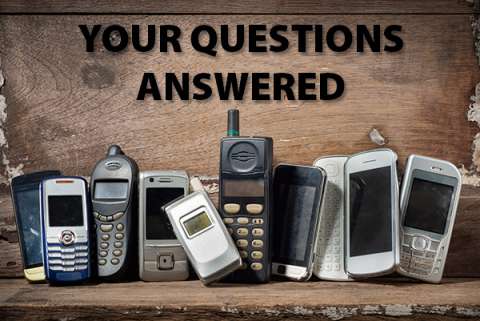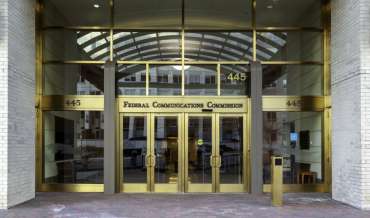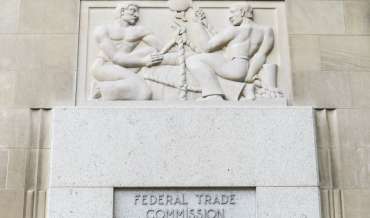Table of Contents
- Overview
- The TCPA, Broadly
- The TCPA and Cell Phones: a Textual Analysis
- The TCPA and Cell Phones: a Regulatory History
- Conclusion
Overview
The Telephone Consumer Protection Act (TCPA) is the most significant vehicle for consumer litigation in America today. Many of the most prominent and newsworthy TCPA lawsuits—including multimillion dollar class actions and litigation against at least three different 2020 presidential campaigns—involve alleged violations stemming from calls and texts to cell phone numbers. As a result, there is a mistaken belief that the TCPA primarily or entirely serves to regulate calls to cell phones.
In reality, the TCPA regulates all sorts of telemarketing activity, including calls to every type of phone number. This article will explain how the TCPA’s restrictions on the use of an automatic telephone dialing system (ATDS) to call cell phone numbers fits into the law’s overall regulatory framework.
The TCPA, Broadly
The TCPA was signed into law by President George H.W. Bush in 1991. An amendment to the Communications Act of 1934, it has been the centerpiece of federal telemarketing regulations for nearly three decades. It contains a number of regulations that apply to all manners of telemarketing—not exclusively to calls to cell phones.
Among the TCPA’s provisions that apply broadly across different kinds of telemarketing are the following:
Calling Time Restrictions
Companies can contact residential consumers only between 8:00 AM and 9:00 PM (recipient’s time zone).
Robocalls
The TCPA does not allow the use of an artificial or prerecorded voice to be used to call a residential landline or wireless number for marketing purposes without prior express written consent.
Identification Requirements
Among other things, the TCPA requires the caller to provide their name, the name of the company on whose behalf they are calling, and a telephone number or address which can be used to contact them again.
National Do Not Call (DNC) Registry
Telemarketers are required to suppress phone numbers on the National Do Not Call Registry. Remember that some states have their own local DNC lists as well, separate from the federal list.
Internal Do Not Call List
Companies are required to maintain an internal DNC list of consumers who asked not to be called or texted.
The TCPA and Cell Phones: a Textual Analysis
The text of the law itself contains the following prohibition:
“It shall be unlawful for any person within the United States, or any person outside the United States if the recipient is within the United States—
(A) to make any call (other than a call made for emergency purposes or made with the prior express consent of the called party) using any automatic telephone dialing system or an artificial or prerecorded voice— …
(iii) to any telephone number assigned to a paging service, cellular telephone service, specialized mobile radio service, or other radio common carrier service, or any service for which the called party is charged for the call, unless such call is made solely to collect a debt owed to or guaranteed by the United States”
This is the key section for regulating calls to cell phone numbers, restricting autodialed marketing calls to “any service for which the called party is charged for the call.” As far as the TCPA is concerned, cell phones are a part of a category of telephonic communications defined by the possibility that the called party is charged for receipt of a call.
A key consequence of this categorical designation is that calls to wireless phone numbers always require either equally stringent or more stringent standards of consent than calls to landline phones, regardless of the dialing technology used or the content of the call. For autodialed marketing calls to cellular phones, the TCPA requires the caller to have the prior express written consent of the called party.
The TCPA and Cell Phones: a Regulatory History
Much of the early enforcement of this provision of the TCPA focused more on spam faxes than calls to cell phones. The Federal Communications Commission’s (FCC) 2003 TCPA Order outlines the prohibition of “war dialing,” which it defines as the practice of “using autodialers to dial large blocks of telephone numbers in order to identify lines that belong to telephone facsimile machines.” And even now, heading into the third decade of the 21st century, there are still examples of litigation and FCC regulatory enforcement against fax campaigns that violate the TCPA.
The gradual switch in emphasis from faxes to cell phones follows the general technological changes in American communication over the past 30 years. In 1991, the year that the TCPA became law, there were fewer than eight million mobile phone subscribers in the United States. By 2018, there were more than 420 million mobile phone subscribers in the US. This massive increase in the use of cell phones over this span of time spurred massive changes in telemarketing strategies and, accordingly, TCPA enforcement. A significant milestone in this process was the Ninth Circuit’s 2009 decision in Satterfield v. Simon & Schuster that determined that text messages are the same as voice calls for the purposes of TCPA regulations.
These technological changes coincided with significant changes in how the TCPA is enforced. The TCPA contains a private right of action, allowing consumers to file suit against alleged violators themselves rather than relying entirely on government entities to enforce the law’s regulations. The original intended use for this private right of action was to allow consumers to file lawsuits in small claims court. In fact, Senator Fritz Hollings, who originally sponsored the TCPA in 1991, highlighted this aspect in a speech on the Senate floor, saying, “The … bill contains a private right of action that will make it easier for consumers to recover damages from receiving these computerized calls. … Small claims court or a similar court would allow the consumer to appear before the court without an attorney.”
In the early years of the law, federal courts generally wouldn’t even accept jurisdiction over TCPA cases. Eventually, some district courts began hearing TCPA cases, leading to a jurisdictional split that was eventually resolved by the Supreme Court in 2012 in Mims v. Arrow Financial Services, LLC. Over the past decade, the number of TCPA complaints, including class actions, filed in federal courts has exploded.
Conclusion
The TCPA plainly does not apply exclusively to cell phones. As discussed above, the section of the law itself that discusses cell phones includes it in a list of other sorts of telecom and broadcasting technology that share the common characteristic of the user possibly being charged on a per-call basis. However, it is undeniably true that the TCPA has been used to regulate telemarketing to cell phones in increasingly extensive and expensive ways over the past three decades.
For many marketers, TCPA compliance is primarily a matter of how they conduct texting and calling campaigns to cell phone numbers. But that is more a function of the massively increased prevalence and prominence of cell phones compared to landlines. TCPA regulations still apply to landlines (and fax numbers, pager numbers, etc.), often in the same ways that they apply to cell phones. Last year, a district court handed down a $925 million judgment for 1.8 million TCPA violations stemming from calls to both cell phones and landlines.
For more information on this topic, click here for a free guide.






